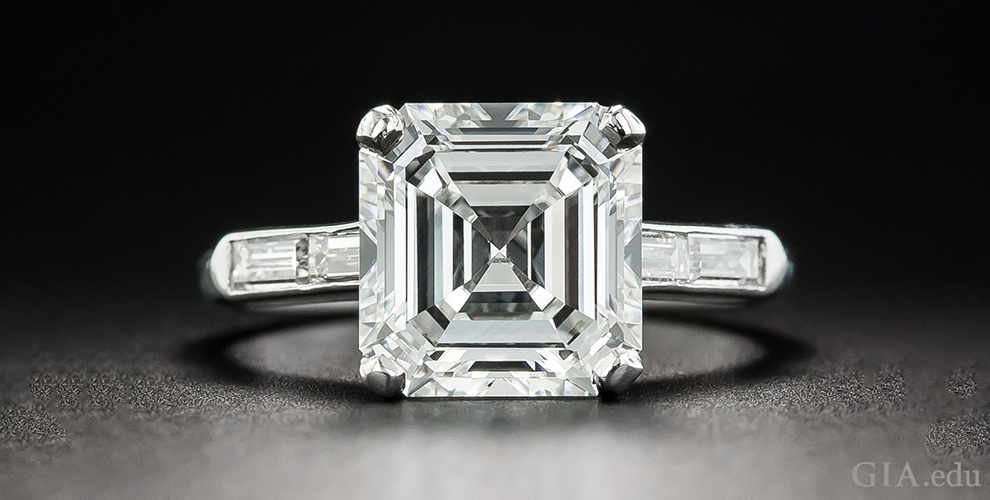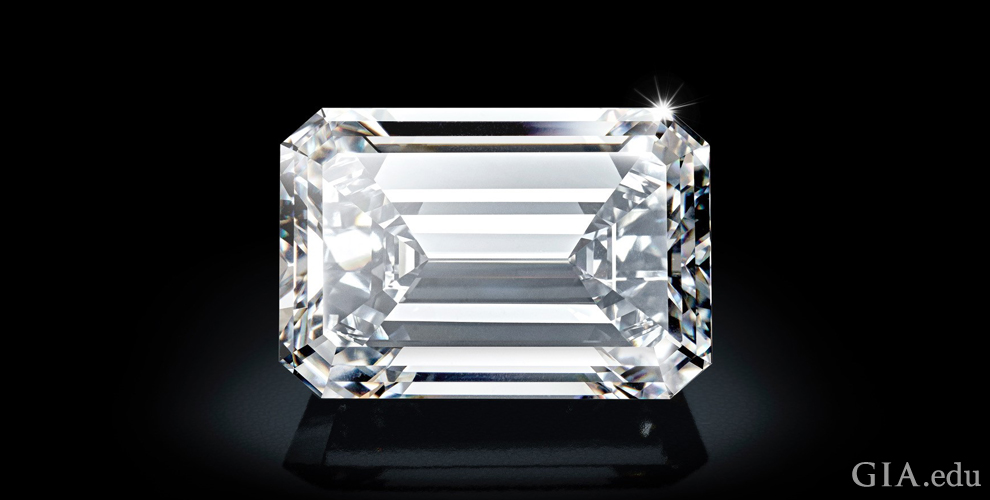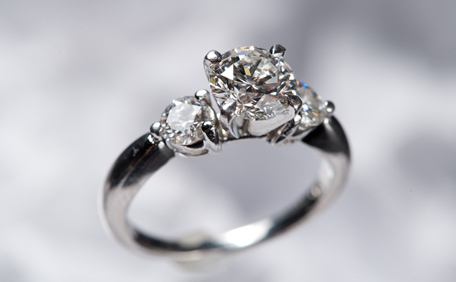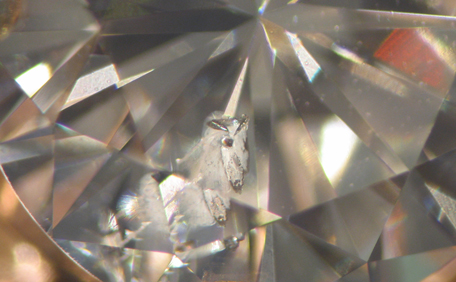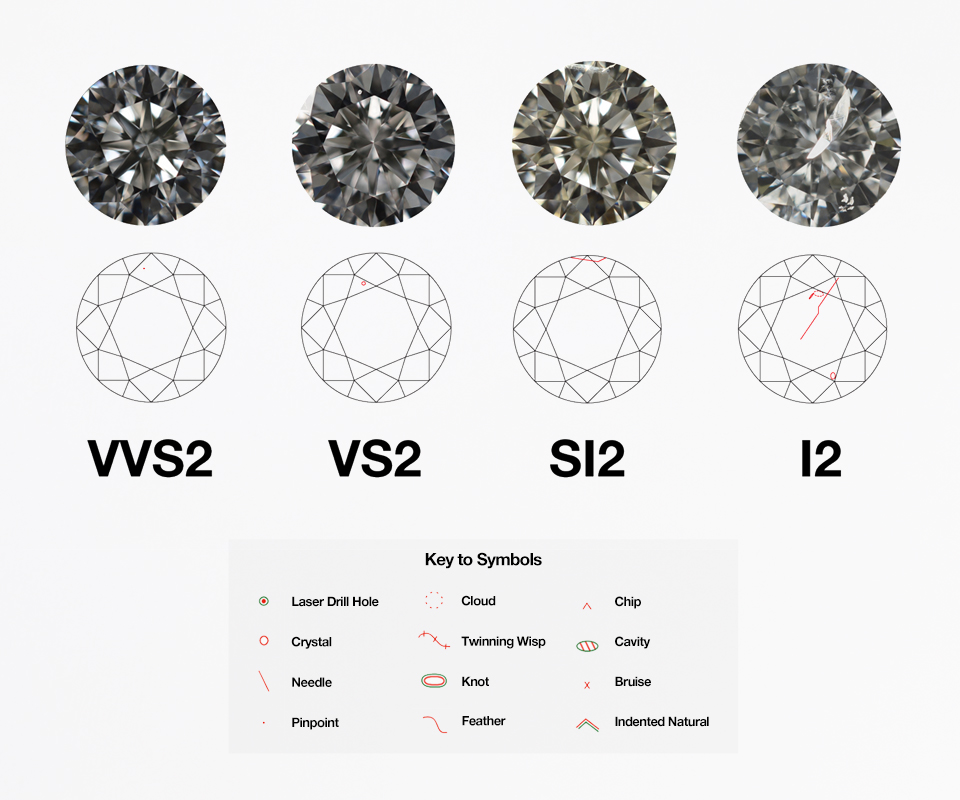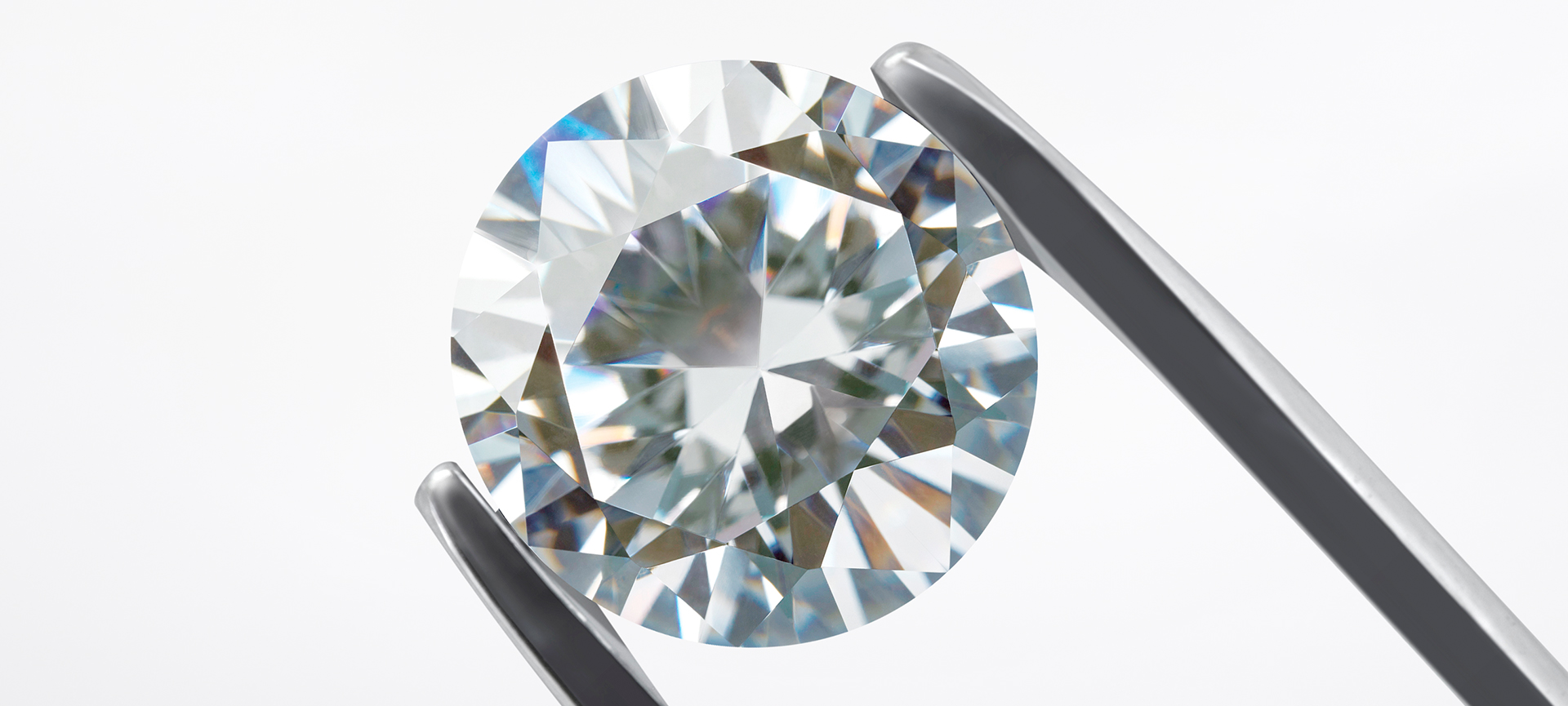Diamond clarity is the relative absence of inclusions and blemishes. You should know about this 4Cs quality factor because it affects a diamond’s beauty and value. To understand what a diamond clarity is, use these tips to help you shop smartly:
- Inclusions and blemishes are not “flaws”
- When it comes to diamond clarity, less is more
- Learn the grades on the GIA Diamond Clarity Scale – the global standard
- Find out how GIA grades diamond clarity
- Treatments can improve diamond clarity – but it’s not all good
- Certain types of inclusions can make a diamond more vulnerable to damage
- To be sure of diamond clarity, get a GIA grading report
1. Inclusions and blemishes are not “flaws”
Diamond clarity is one of the 4Cs (the others being color, cut and carat weight). It plays an important role in determining a diamond’s overall beauty and ultimately its value. Diamond clarity refers to inclusions in the diamond and blemishes on its surface.
Inclusions and blemishes can result from a diamond’s formation, its crystal structure, the cutting-polishing-setting processes, or general wear. Inclusions can be totally enclosed within the diamond or they can extend into the diamond from its surface. Blemishes are confined to the diamond’s surface. Gemologists use 10× magnification to determine a clarity grade.
You may hear some people describe inclusions and blemishes as “flaws.” But most gemologists think of them instead as powerful identification tools. Inclusions can help in the separation of some natural diamonds and synthetic diamonds. And because most diamonds have a unique combination of inclusions and blemishes, these clarity characteristics act like fingerprints, giving each diamond its own identity.
If you’re wondering whether your diamond’s laser inscription is considered a blemish or inclusion – the answer is neither. A laser inscription is not considered a clarity characteristic.
To help you understand what diamond clarity is, here are pictures and descriptions of 16 types of inclusions and 11 types of blemishes commonly seen in diamonds.
2. When it comes to diamond clarity, less is more
When it comes to diamond clarity and value – like diamond color and value – less is always more. Diamonds with few or no clarity characteristics are rare and because rarity drives price, they will cost more. In fact, diamonds without any visible clarity characteristics under a 10× jeweler’s loupe are called “flawless.” These diamonds are so rare that many jewelers may never see one in their career.
Less expensive diamonds often have inclusions that can be seen with the unaided eye. Most faceted diamonds fall between the two extremes – they have inclusions visible only with magnification.

Diamond clarity affects a diamond’s appearance. A diamond with many inclusions and blemishes can look off-color, pitted and scratched. This diamond has a clarity grade of I3. Photo: GIA
Clarity characteristics may be more visible in certain diamond cuts than others. For example, they will typically be easier to see in an emerald cut diamond compared to a round brilliant cut diamond. The long, rectangular facets that are characteristic of emerald cut diamonds make inclusions more readily visible than among the many smaller facets of a brilliant cut. However, if a diamond has many large clarity features, or if they are mirrored by the diamond’s many facets, they will be easy to see – no matter the shape or cutting style.
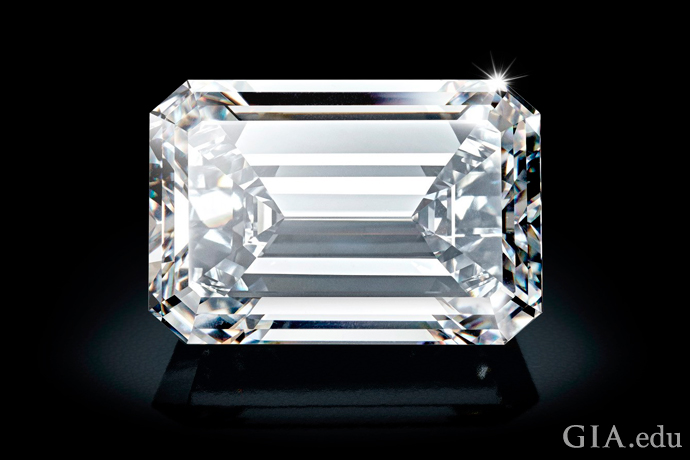
This 163.41 carat (ct) D-Flawless emerald cut diamond is a thing of uncommon beauty. Inclusions or blemishes visible with the unaided eye would mar its appearance. Courtesy: Christie’s
It’s worth noting that inclusions normally have more impact on a stone’s beauty and value than blemishes. This is because many blemishes are easy to remove. A fashioned diamond can sometimes be recut or repolished to eliminate blemishes and possibly improve its clarity grade.

If all other factors are equal, as clarity increases so does diamond price per carat. Illustration: Peter Johnston/GIA
3. Learn the grades on the GIA Diamond Clarity Scale – the global standard
Diamond clarity is described using standard terminology developed by GIA in the 1950s. The grades are based, in part, on the visibility of inclusions and blemishes with 10× magnification by a trained grader. The GIA Diamond Clarity Scale is used to decide what diamond clarity is. It has six categories, some of which are subdivided, for a total of 11 specific grades for natural diamonds.
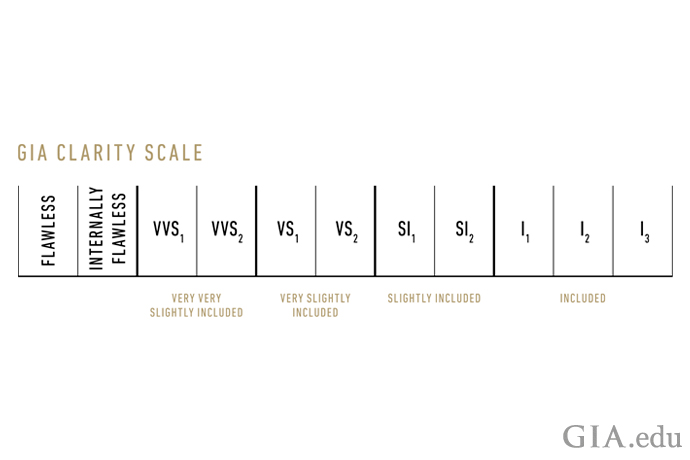
The GIA Diamond Clarity Scale has 11 grades, which range from Flawless to I3.
- Flawless (FL): No inclusions and no blemishes visible under 10x magnification
- Internally Flawless (IF): No inclusions and only insignificant blemishes visible under 10x magnification
- Very, Very Slightly Included (VVS1 and VVS2): Minute inclusions that range from extremely difficult (VVS1) to very difficult (VVS2) to see under 10x magnification
- Very Slightly Included (VS1 and VS2): Minor inclusions that range from difficult (VS1) to somewhat easy (VS2) to see at 10x magnification.
- Slightly Included (SI1 and SI2): Noticeable inclusions that are easy (SI1) or very easy (SI2) to see at 10x magnification
- Included (I1, I2 and I3): Inclusions that are obvious under 10x magnification – and often visible with the unaided eye – which may affect transparency and brilliance

This 2.78 ct D-color round brilliant cut diamond is Internally Flawless. Photo: Robert Weldon/GIA. Courtesy: Rogel & Co. Inc.
Here are two other terms you might come across.
- Eye clean – This is an industry term for a diamond whose inclusions cannot be seen with the naked eye. Some shoppers may feel, “If I can’t see an inclusion or blemish, the diamond is beautiful enough for me.” An eye-clean diamond may fit the bill in these cases. GIA does not use this term.
- SI3 – Some diamond grading labs issue a clarity grade of SI3. GIA does not. The Institute has studied the SI3 suggestion at various times over the years. GIA still concludes there is no reason to change its long-standing and universally accepted diamond grading system.
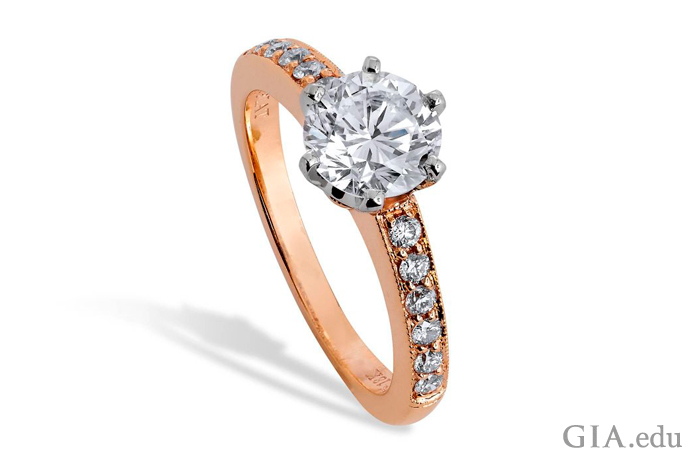
The beauty of this 1.40 ct F color, SI1 clarity round brilliant cut diamond is undeniable. The six-prong platinum basket and 0.20 carats of diamond melee in an 18K rose gold shank add extra charm. Courtesy: 1stdibs.com
4. Find out how GIA grades diamond clarity
Just as GIA developed the globally recognized terms for grading diamond clarity, it also developed the processes for objective and unbiased diamond clarity grading . GIA procedures include viewing a diamond under controlled lighting conditions, using specific viewing angles and distances, and following precise steps that ensure every part of the diamond is examined to locate all the inclusions and blemishes that might affect its clarity.
A GIA diamond grader examines the diamond using her trained eye, a 10× jeweler’s loupe and sometimes a microscope at increased magnification. However, the final clarity grade is always determined by the diamond’s appearance under a 10× jeweler’s loupe.
In arriving at a clarity grade, the grader takes into account five factors:
- Size – When all factors are equal, the larger the inclusion and the more visible it is, the lower the diamond’s clarity grade.
- Number – When all other factors are equal, the more inclusions or reflections of inclusions that are visible face-up at 10× magnification, the greater their effect on the clarity grade.
- Location – Refers to the position of an inclusion. The closer an inclusion is to the center of the table, the greater its effect on the clarity grade.
- Relief – Refers to the contrast between the inclusion and the diamond. Generally, the more an inclusion differs in brightness, darkness or color from the diamond, the more visible it is and the greater its impact on clarity.
- Nature – Refers to the type of characteristic and its inherent effect on the diamond. In other words, some inclusions or blemishes can have greater impact on clarity than others.
A diamond may have many tiny inclusions and still be high on the clarity scale. Ultimately, it’s the combination of these five factors that affects the overall clarity appearance. Blemishes, in contrast, can often be removed when a diamond is polished or repolished, so they rarely have an effect on grades lower than IF.

The 10.21 ct emerald cut diamond featured in this engagement ring received a diamond clarity grade of VS2. Courtesy: TrueFacet.com
5. Treatments can improve diamond clarity – but it’s not all good
Manufacturers sometimes try to improve diamond clarity to make stones more attractive and more valuable. Here are two common methods used to accomplish this.
- Laser drilling makes it possible to remove or lighten inclusions deep inside the stone. The laser creates a narrow channel from the surface to a dark inclusion in the diamond. If the included material is not vaporized by the laser, it is dissolved or “bleached” with a strong acid introduced via the channel. The resulting white appearance is generally considered more appealing than a dark spot that does not return light. Because the treatment is permanent (the inclusion will not come back or darken), GIA grades laser-drilled diamonds, but it records the resulting drill holes as inclusion features that may impact the clarity of the diamond.
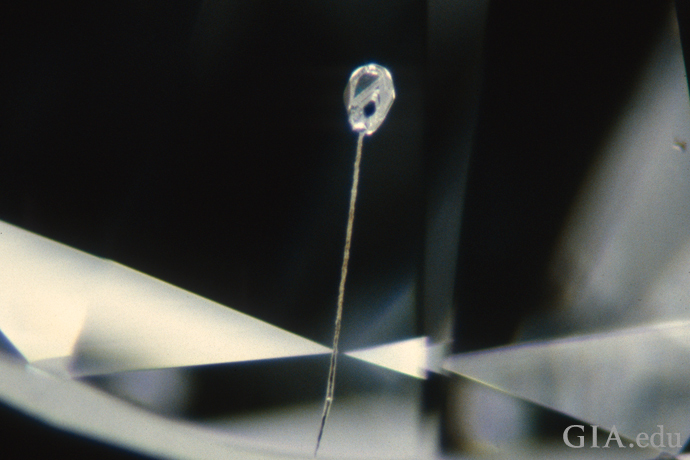
As seen here with 30× magnification, a thin channel has been laser drilled from the surface of the diamond to a large inclusion that was then vaporized or dissolved. Photo: Vincent Cracco/GIA
- Fracture filling is the filling of surface-reaching fissures, fractures and laser drill holes with a glass-like material that has a refractive index close to that of diamond. Fracture filling doesn’t “heal” the fracture or improve the diamond’s actual clarity. The original fracture is still there, it’s just more difficult to see. However, this treatment is not permanent, and tales abound of fracture-filled diamonds that have been damaged when exposed to high heat during some jewelry repair, setting or cleaning procedures. As a result, many laboratories – including GIA – will not grade fracture-filled diamonds, and the fact the diamond has been fracture filled must be disclosed by the seller.
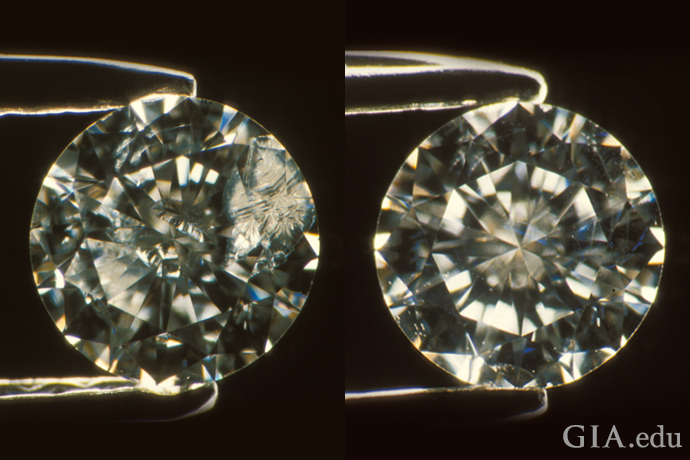
A 0.20 ct diamond with large, highly visible reflective fractures is shown here before (left) and after (right) filling with a glass-like substance. Photos: Shane F. McClure/GIA
6. Certain types of inclusions can make a diamond more vulnerable to damage
Generally, if a diamond has significant durability problems, it doesn’t survive the friction and pressure of the cutting process. However, certain types of inclusions, especially if they’re near the girdle – the narrow section that separates the diamond’s upper (crown) and lower (pavilion) parts and functions as its setting edge – can make a cut diamond more vulnerable to damage. For example, if the stone is hit precisely on a feather or other surface-reaching inclusion, it might chip. Likewise, very deep feathers that extend from the crown to the pavilion, or that penetrate about one-third of the way or more into the diamond, could pose durability concerns.

The GIA Diamond Grading Report for diamonds on the D-to-Z color scale features a plotting diagram (bottom center panel), which maps a diamond’s inclusions and blemishes as viewed from the crown (left) and pavilion (right).
7. To be sure of diamond clarity, get a GIA grading report
The GIA Diamond Grading Report, the GIA Diamond Origin Report and the GIA Diamond Dossier provide an objective, unbiased assessment of diamond clarity along with the other “Cs” of diamond quality.
A GIA Diamond Grading Report and GIA Diamond Origin Report contain a plotting diagram that maps the diamond’s inclusions and blemishes. The diagram shows the diamond’s shape and facet arrangements as seen from two views: the crown and pavilion. Symbols are used to represent the type, location, relative size and sometimes the shape of the clarity characteristics being plotted. In addition to providing details about a diamond’s clarity features and describing the diamond’s clarity, the diagram can also assist in diamond identification. No two diamonds below Flawless and Internally Flawless have exactly the same combination or placement of clarity characteristics.
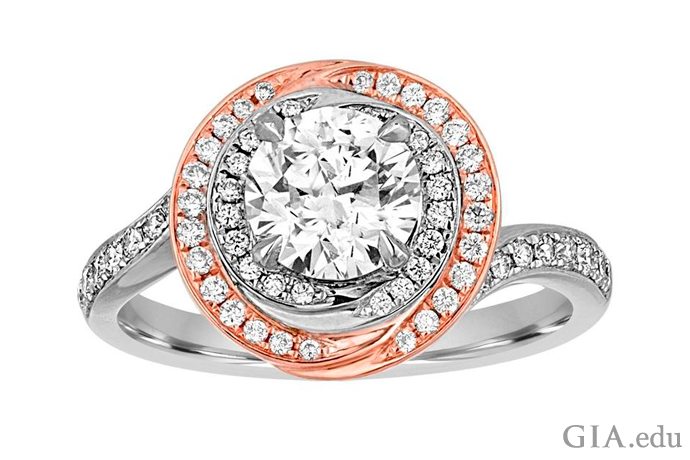
In this engagement ring, a 1.05 ct round brilliant cut diamond is surrounded by a double halo of diamond melee in an 18K white and rose gold setting. The many facets of a brilliant cut diamond make inclusions less visible than they would be in some other cuts, such as the emerald cut. Courtesy: 1stdibs.com
Now that you’ve brushed up on some diamond clarity essentials and know what color and clarity grades are good for your diamond, you just might be wondering: What’s the most important C of diamond quality?
